 By Kyle Pinion
By Kyle Pinion
Gene Luen Yang is the writer/artist of critically acclaimed graphic novels like American Born Chinese and Boxers & Saints, as well as the writer of Level Up, The Eternal Smile, and adaptations of Avatar: The Last Airbender. Yang’s work has been awarded with multiple Eisners including “Best New Graphic Album” for American Born Chinese (which was also the first ever graphic novel finalist for the National Book Award in Young People’s Literature) and for “Best Short Story” for The Eternal Smile. This year, Yang was nominated for another Eisner, this time under “Best Publication for Teens (aged 13-17)” for the historical epic Boxers & Saints.
Additionally, 2014 saw the debut of his latest graphic novel, The Shadow Hero, a collaboration with artist Sonny Liew on a resurrection of the sadly forgotten Golden Age super-hero: The Green Turtle; a character who comics fans consider the first Asian American superhero.
I was fortunate enough to be able to spend time with Yang to discuss the origins of this new work, his collaborative process with Liew, as well as delving into some of the intricacies of Boxers & Saints and some of the connective tissue between his two most recent projects.
You’ve spent your career working on affairs of an educational nature, or towards a young adult audience, what was the impetus to delve into Superhero comics now?
I love superheroes. I grew up reading superhero comics, and starting collecting superhero comics in the fifth grade. I was a Marvel guy all the way through my childhood. I’m not totally sure why it took me so long to get to superheroes. There were a couple of opportunities that showed up maybe a few years ago, but the timing was just never right. This felt like a door opening. All of this pent up superhero energy that I had as a kid was finally released.
These other opportunities, were they mainstream superheroes?
Yeah, there were a couple of mainstream superhero opportunities where the timing was just never right, and in some ways, the Dark Horse book that I do: Avatar: The Last Airbender is about super powered young people, so there’s a lot of overlap between Avatar and traditional superheroes. But as for The Shadow Hero, this is really solidly in the genre and something that I just really wanted to do for a long time. I’m not totally sure why it took so long.
When did you first discover the work of Chu Hing?
It was online. Like how most of discover a lot of stuff on the internet and several years ago a good friend of mine, Derek Kirk Kim pointed me to this blog post on a site called “Pappy’s Golden Age Comics Blogzine”. It was a feature about this obscure character from the 1940’s called “The Green Turtle”. The Green Turtle was created by Chu Hing and the rumor was that Chu wanted him to be a Chinese American superhero but his publishers wouldn’t let him do it. So, he draws this comic in this really funky looking way, where he’s constantly hiding his face from us. The rumor was he did this so that he and his audience could imagine The Green Turtle as a Chinese American. When I read that blog post, I was just fascinated. I was fascinated by the character himself, and I thought his character design was so “Golden Age” with his bare chest and the cape and everything. There’s something endearingly goofy about it. And the rumor surrounding his creation I found fascinating as well.
What were some of the challenges you found in crafting an origin story for a character that had none, as I think Chu Hing crafted only a few stories at most?
Yeah, he did five, but they were only 8 pages long each. And each issue, he has this sidekick named “Burma Boy” and every time Burma Boy asks the Green Turtle for his origin story something interrupts him. So yet, there’s another thing that’s being hidden from you. It felt like it was very rich, the original material that is. There are all these weird little pieces that I wanted to try and puzzle together. There’s this other bit, he has this turtle shaped shadow that follows him around. In the original comic, there’s no explanation given for this thing at all, it was almost like a design artifact. I thought there was something there that I wanted to explore.
What were some of the influences that helped form this tale? You mentioned that you were a superhero fan growing up…
I think a lifetime of reading superhero comics was really the influence and in The Shadow Hero we wanted to play with a lot of the tropes and a lot of the conventions of the genre but aiming to present them in a new way.
Hank’s (the Green Turtle) family was one of the highlights of the book for me, and they were so well fleshed-out. I know you sometimes pull from your own life experiences, for example in American Born Chinese. Is that the case with Hank’s supporting cast?
Yeah, absolutely, I don’t know how to write outside of my own life. Even if the story is very fantastical or set in a fantasy world, I still feel like the origin of it has to start from my own life. For Hank’s family, his mom is this very opinionated person who comes from a really good place. But she has all these ideas about how he should live his life. She’s actually based on these women that I knew in a church that I grew up in, these Chinese and Chinese American women. Who were all very well intentioned, but had very strong opinions about your life.
Were they equally as hilarious as Hank’s mother?
As a kid, I found them simultaneously hilarious and terrifying. (laughter)
Where did Sonny Liew come into the picture?
Sonny and I had collaborated together. We did a short story for an anthology called Secret Identities. It was a collection of stories about Asian American superheroes by Asian American creators and I enjoyed that process of working with him so much that I wanted to do it again here. After I started writing the outline for The Shadow Hero, after I started talking to First Second about it, they asked who I wanted to collaborate with. Sonny was at the top of my list. I just thought he had the perfect combination of the comedic and dramatic, and I thought he would be perfect for the story.
Was there ever any consideration for you taking on art duties yourself?
I thought about it for like two seconds, but I just don’t think I could pull of what Sonny can pull off. He’s amazing!
Between the two roles, when you are the writer/artist on a piece of work vs. when you’re writing the story with someone else taking on the other half of the duties, does it differ your approach at all? Was it a matter of giving up some control so Sonny could craft his own vision of your words?
Absolutely, when you work with someone else, you expect the final voice that comes out to be a mixture of the two people that are working together. And then, for something like Boxers & Saints, where I did all of the writing and the drawing, I had a really personal vision that I wanted to throw out. I did work with someone on that as well, as even Boxers & Saints was a collaboration with a colorist named Lark Pien, who is amazingly talented. The Shadow Hero, we’re hoping, is more of an expression of our friendship, of something that’s between the two of us.
Do you have an approach that you prefer?
No, I think it depends on the story. Like with The Shadow Hero, I just don’t think I could have pulled that off on my own. I really think having both Sonny and I together was the right way to go?
Do you work from a script when you collaborate with another artist like Sonny?
I gave it to him as thumb-nails, but the thumb-nail sketches that I sent to him were pretty basic. Everything was laid out on a six-panel grid and he was the one that sort of innovated on top of that.
Will there be more of The Shadow Hero in the future? A possible sequel?
I’m not sure yet, I hope so. I really love working in that world and that character, but a lot of that depends on Sonny and his schedule. He has a lot of deadlines that he’s trying to make right now. It also depends on how this first book does and what First Second thinks.
Sonny teased me on Twitter about it and got my hopes up for a Part Two or an on-going series of some kind.
I would love to keep working with him.
Just to circle to the other half of the reason you’re here is because of your Eisner Nomination for Boxers & Saints, which I’m a massive fan of as well, and from a personal side of things it was an area of history I didn’t know much about…
Well, thank you, I didn’t know much about the Boxer Rebellion either when I started that project. I vaguely remember hearing about it from high school history. The reason I got interested is, I grew up in a Chinese Catholic community and in the year 2000 Pope John Paul II canonized a group of Chinese Catholic Saints. It was the very first time that Chinese citizens had become canonized, which my home church kind of freaked out about. When I then looked into the lives of these Saints, I discovered that a lot of them had been martyred during the Boxer Rebellion. They were specifically martyred because they were Easterners that had embraced Western faith. I felt like that whole incident kind of embodied this clash of Eastern/Western thinking that I personally have struggled with as an Asian American, for someone that has a foot in each culture.
It’s also a beautifully even-handed approach though between both sides. You display the heroism of those “Boxers” in the Boxers book, but in the Saints volume you see the aftermath of their actions and the people they are slaughtering. Was it your aim to display both sides in this fashion?
That came out of my own ambivalence. When I was reading about the history of it, I was so ambivalent, I was trying to find a hero and I couldn’t figure out who that hero was or what side that hero was on. That ultimately caused me to decide that I had to do two books.
The second book, Saints, is a little more monochromatic looking in its coloring, was that all Lark or a decision you made together?
That was a decision we made together. I really wanted the first book to feel almost like a comics version of a Chinese War Epic. I don’t know if you’ve ever seen one, but they’re always really long, really colorful and really sad at the end. That’s how I wanted that first book to be. The second book I wanted to be much more personal. I wanted it to be humble in every sense of the word; smaller, lessened scope than the first book, and I really wanted it to feel like an American Independent Comic. I feel like a lot of that type of comic has a limited use of color that establishes a sense of intimacy between the reader and the creator, that’s what we were going for.
The books also take a similar approach to faith and religion, I was particularly struck by the panel of Jesus Christ with the eyes on his hands, which hearkens back to the fable that was brought up in the Boxers book. How much of your own religious belief was brought into this work?
Faith is an important part of my life, its one of the major pieces on which I build my own identity. When I was in college, I really struggled with this, with how to write about faith in an authentic way. Anytime I would try to do it, it would come out really stale and preachy. I had a writing professor who was a Buddhist, she basically gave me the advice: “You should live your faith, and you should write your life”, and that’s what I’ve tried to do ever since. For the piece that you’re referring to, that was inspired by an actual piece of artwork I saw at an Asian art museum years and years ago. Guanyin, the Chinese Goddess of Mercy was surrounded by this halo of hands with eyes in the palm. When I saw that I thought that looked so much like a crucified hand, that looks so much like the imagery I was surrounded with in a Western church. I wanted to explore that connection. That image with a hand with some kind of hole or an eye, it’s independent of faith. It’s found in all sorts of world faith traditions and it’s a very interesting thing.
As a sort of common denominator between the two works (Boxers & Saints and The Shadow Hero), you delve into magical realism a bit. When I read the first chapter of The Shadow Hero, I found some point of comparison between yourself and Gilbert Hernandez’s Palomar stories.
Oh, I love Gilbert Hernandez, love him!
Me too! Is the choice to aim towards magical realism in these tales a conscious choice or is it a natural off-spring from what might start off as a more grounded idea?
It has to come out naturally. I think it comes about growing up having read superhero comics and being really big into fables and stories that I inherited from my parents. I think it just kind of comes out and it feels natural to me to aim for Magical Realism in the comics.
Are there other influences that you draw from other than Los Bros Hernandez?
I could give you a list of cartoonists as long as my arm: Osamu Tezuka, Jeff Smith, and a bunch of my own friends like Jason Sheehan, they all have influenced me in some way. Scott McCloud is a big influence too. As for stuff outside of comics, for that project in particular (Boxers & Saints), I kept thinking back to this novel by a Japanese Catholic Author named Shusaku Endo who wrote a novel called Silence. He deals with a lot of these same issues, including tension between East and West, what faith is, and what role it should play in an individual’s life and society. It’s a beautiful book.
Since we brought up the Gilbert Hernandez comparison, their work is often praised for its look into Latin American culture, and a lot of your work is focused on the Asian American experience be it the immigrant’s tale seen in The Shadow Hero, the historical background of Boxers & Saints, and the personal nature of American Born Chinese. Do you feel a sense of responsibility as a sort of vanguard of Chinese American focused writing in comics?
I think with all my books, I just really want to tell a story that will carry my reader from the first page to the last. And the way I know how to do that is to sort of write the things that are important to me. Culture and the intersection between culture is something that has always fascinated me and I think that’s where its always come out.
You’ve had a long relationship with First Second, why that particular publisher?
They’re amazing, you know we talk about this intersection between cultures, I really feel like First Second is like that in so many different ways. But one way is that they’ve published Asian comics, European comics and American comics. Their aesthetic is sort of a combination of all three of those different cultures. I feel like I fit here.
Any future projects you’re working on beyond The Shadow Hero?
I’m working on a middle grade comic book, it’s a series, and we’ve signed on for three books so far. I’m doing it with another cartoonist named Mike Holmes and it’s all about coding and programming.
That’s a whole area of your background we didn’t even get a chance to talk about, your Computer Science background. I hope that’ll be something we can circle back to next year!
That’ll be great!


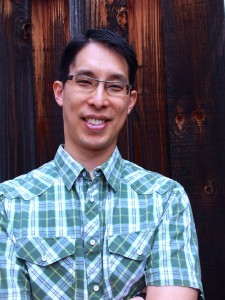
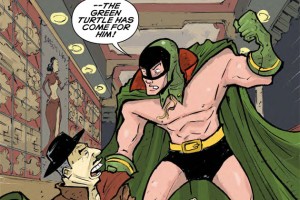
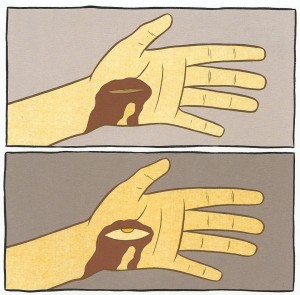
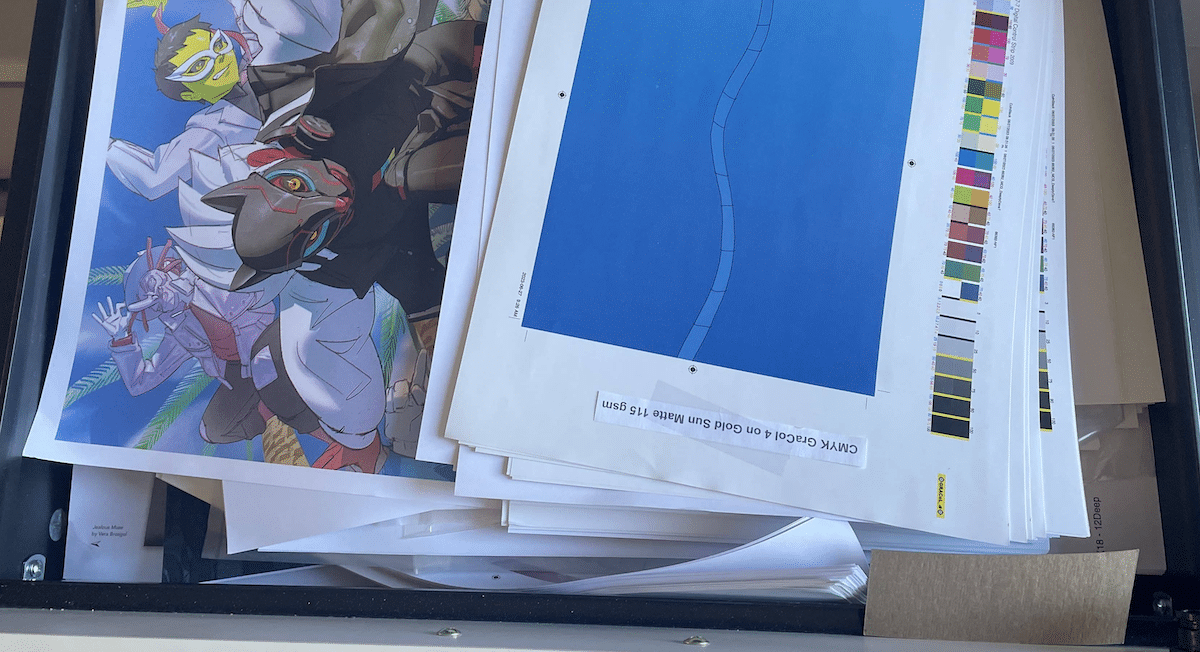
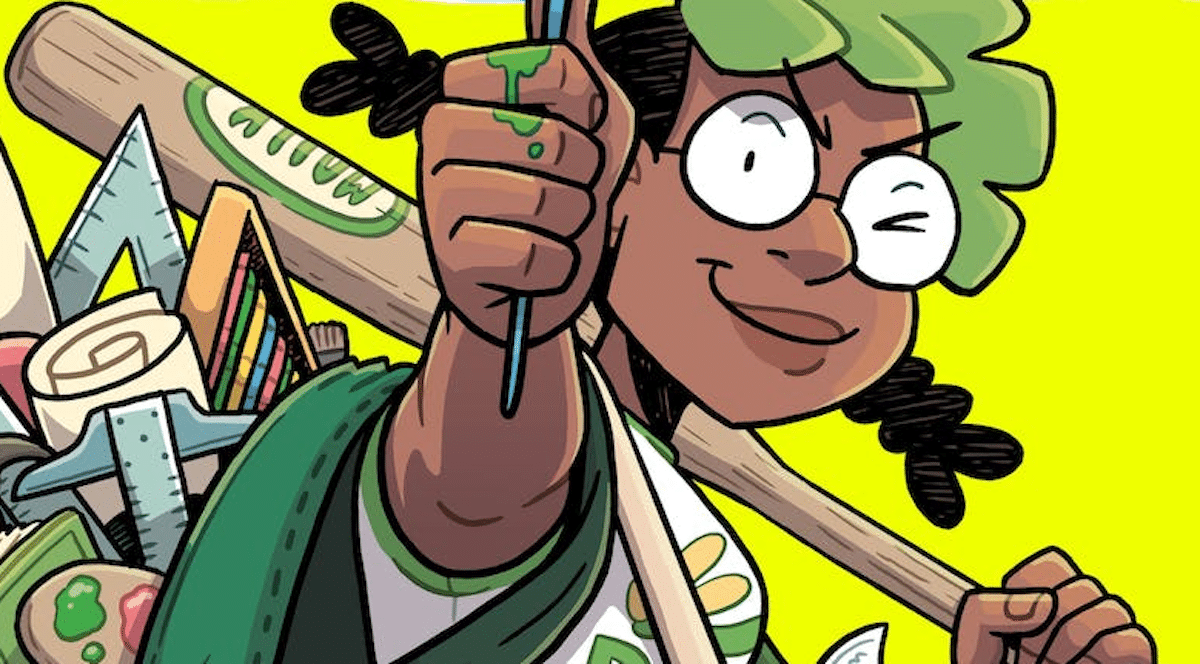
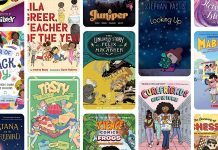
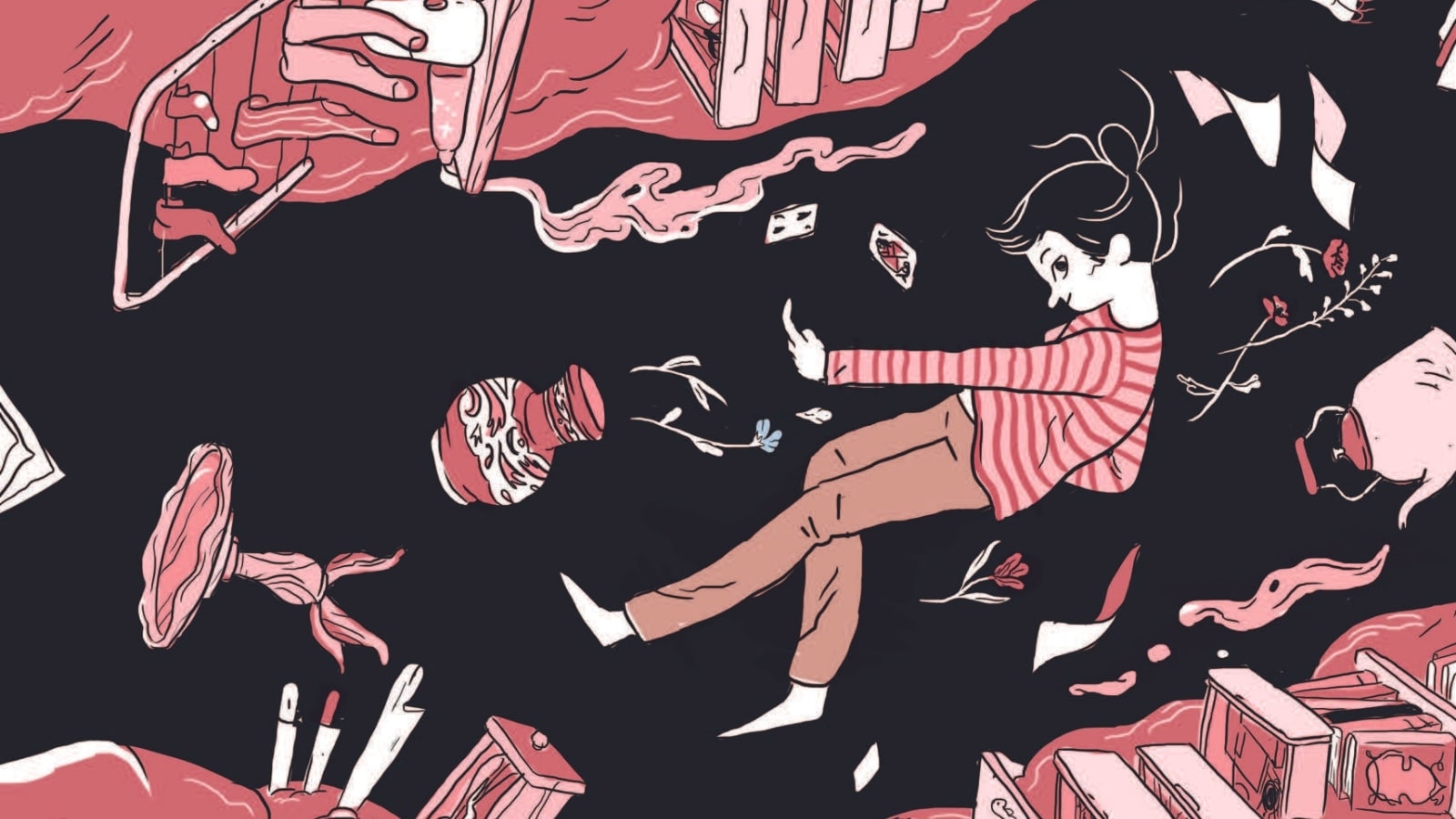

Great interview! I had a similar experience with Gene Yang. We covered some other aspects of comics and his work in my interview at Comics Grinder:
http://comicsgrinder.com/2014/08/05/comic-con-2014-interview-gene-yang-and-the-shadow-hero/
It was a pleasure to get to chat with Gene!
Comments are closed.